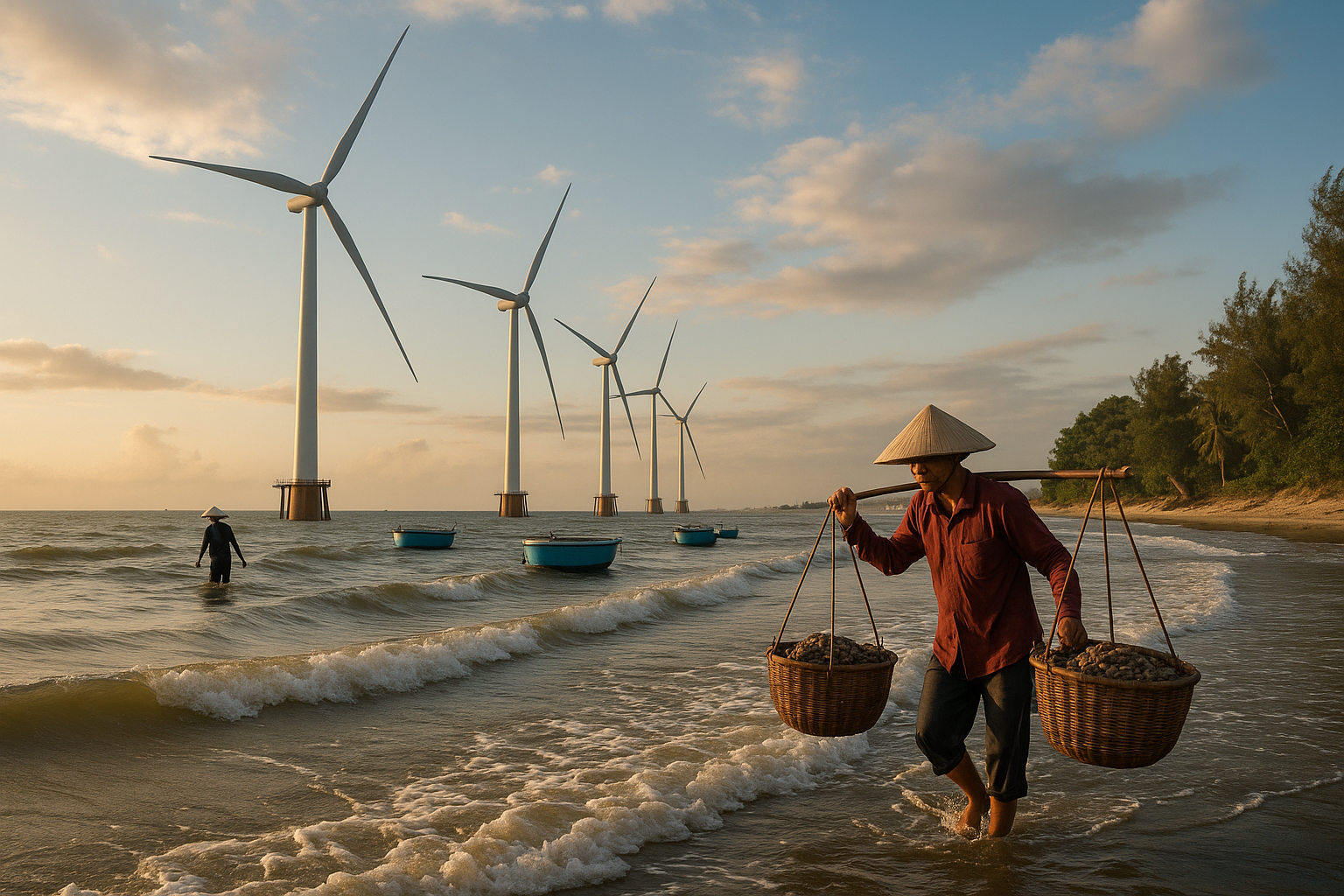Vietnam’s Offshore Wind Plan: Balancing Clean Energy Growth with Nature and Livelihoods
The Viet Nam Offshore Wind Sectoral Planning report outlines a strategic, data-driven roadmap for developing offshore wind to meet Vietnam’s clean energy targets by 2050. It identifies the most viable marine zones while balancing economic, environmental, and social priorities.

Vietnam’s transition toward clean energy is entering a bold new phase, as detailed in the Vietnam Offshore Wind Sectoral Planning report, a collaborative effort spearheaded by the World Bank’s Energy Global Practice. Developed with technical contributions from BVG Associates, Royal HaskoningDHV (RHDHV), The Biodiversity Consultancy (TBC), and the Vietnam Institute of Energy (IoE), and funded by the Australia–World Bank Group Strategic Partnership Program (ABP2), the report presents a carefully structured vision for the nation’s offshore wind development. With Vietnam pledging to achieve net-zero emissions by 2050, offshore wind emerges as a linchpin in the country’s Power Development Plan VIII (PDP8), which sets targets of 6 GW by 2030 and 70 to 91.5 GW by 2050. This planning initiative is not merely technical; it is foundational, laying out how Vietnam can sustainably and strategically harness its marine resources for clean electricity generation while managing environmental and social sensitivities.
From Ocean Potential to Precision Planning
At the heart of the strategy is a tiered marine spatial planning methodology designed to progressively refine large swathes of Vietnam’s territorial waters into the most suitable areas for offshore wind development. This begins with identifying Technical Potential Areas, those meeting minimum wind speed and water depth thresholds, while excluding the first 6 nautical miles from shore due to higher environmental and jurisdictional sensitivities. From here, the team defined Development Zones by filtering out regions constrained by technical barriers, such as oil and gas infrastructure, high-traffic shipping lanes, and aviation safety zones. Within these zones, Development Blocks were then selected based on economic viability, informed by a Levelized Cost of Energy (LCOE) analysis, and further refined by avoiding zones of high biodiversity and social sensitivity. Ultimately, these blocks represent the most promising sites for future project development, though actual Project Areas will be determined later through permitting, consultation, and developer input.
Mapping Opportunities and Regional Challenges
The findings of the spatial analysis are unequivocally optimistic. Based on current data, Vietnam has more than enough available marine space to not only meet but exceed its 2050 targets. An estimated 168 GW of potential capacity lies within Development Zones, well above the high-end PDP8 goal of 91.5 GW. However, regional challenges persist. In the central region, water depths exceed 60 meters, meaning only floating offshore wind technology is viable, an option still in early commercial stages and requiring higher tariffs to be economically feasible. The report cautions that achieving the central region’s 0.5 GW goal by 2030 is ambitious unless specific support mechanisms for floating wind are introduced. Conversely, the southern region, especially areas southeast of Ho Chi Minh City, offers a compelling mix of low LCOE, shallower waters, and proximity to ports and grid infrastructure. These conditions make it the strongest candidate for early-scale deployment using fixed-bottom turbines. The north also has viable sites but features higher environmental and social sensitivities near protected areas like Ha Long Bay and Bach Long Vi Island, requiring careful navigation.
Protecting Nature and Communities Along the Way
A standout feature of the report is its integrated approach to mapping biodiversity and social sensitivities. Using a five-point scoring system applied to 5x5 km grid cells, the team created detailed maps that assess how offshore wind development could affect both marine ecosystems and coastal communities. Biodiversity scores were informed by global and regional data sources including BirdLife International’s AVISTEP tool, the IUCN Red List, and various protected area databases. These maps flagged crucial zones like coral reefs, seagrass beds, Important Marine Mammal Areas (IMMAs), and turtle nesting sites. Social sensitivity mapping, meanwhile, used national datasets to assess areas important for fishing, ecotourism, cultural heritage, and community livelihoods. High-sensitivity areas, especially near major fishing vocational centers and UNESCO cultural sites, were highlighted as zones where development would require deeper consultation and risk mitigation. The effort reflects a recognition that clean energy development cannot come at the expense of ecological integrity or social cohesion.
A Smart Roadmap for Strategic Action
While the report does not designate final project sites, it lays out a well-calibrated roadmap for Vietnamese authorities to advance sectoral planning. It recommends a suite of next steps, including validating and improving spatial data, filling critical information gaps (especially around onshore impacts), and conducting broader consultations with local stakeholders and industry players. A call is made for climate risk assessments to evaluate how sea level rise, storm patterns, and ecological shifts may affect future siting. Coordination with Vietnam’s national transmission planning is also emphasized, ensuring offshore generation and onshore grid capacity evolve in tandem. Finally, the report advises undertaking a Strategic Environmental Assessment before further refining Development Blocks and integrating the offshore wind plan with the National Marine Spatial Plan to prevent sectoral conflicts. As Vietnam moves forward, the report stresses the importance of regularly updating the spatial model in alignment with evolving energy targets and market realities.
- FIRST PUBLISHED IN:
- Devdiscourse
ALSO READ
How to Travel to Vietnam on a Budget?
Malawi Explores India's Pioneering Battery Storage Systems for Clean Energy Future
World Bank Report Charts Path to Gender Equality and Inclusion in Botswana
Cameroon’s Green Gold: World Bank Calls for Forest-Led Growth and Fiscal Reform
World Bank: Reforms Could Propel Philippines to 7% Growth, Middle-Class Future










